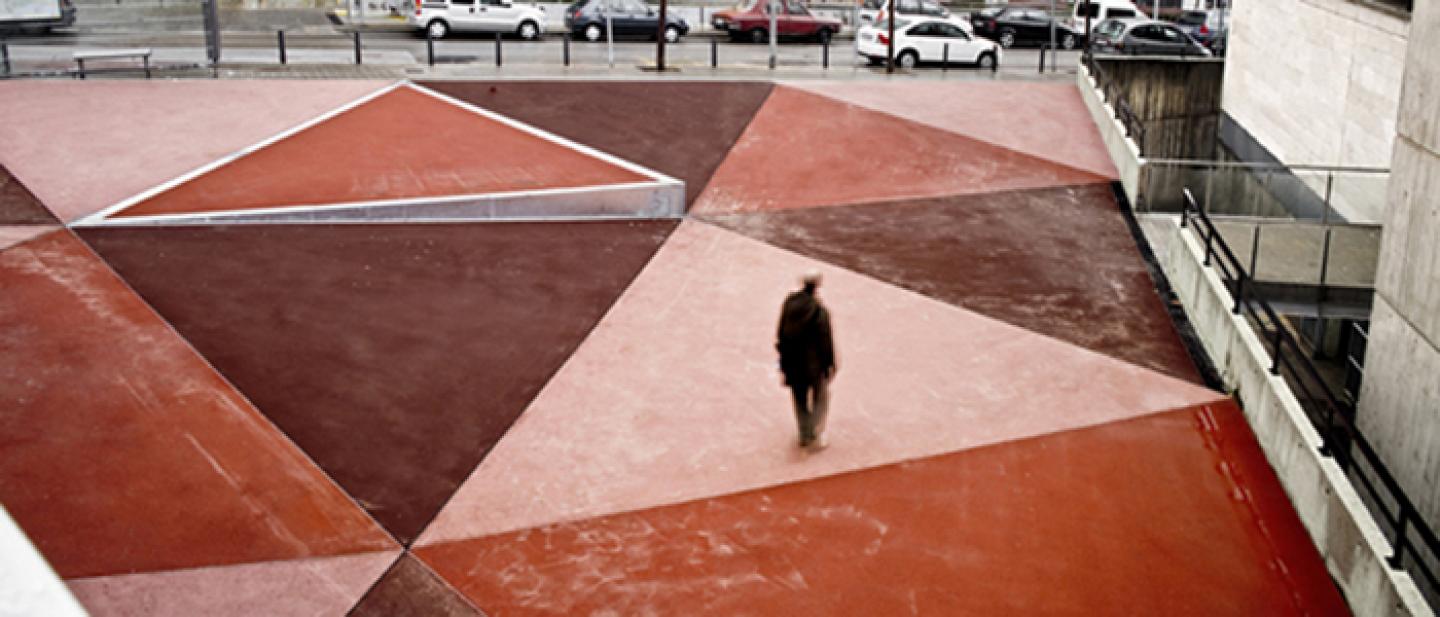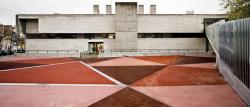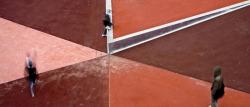The project for the “La Salut” Market Square emerged from a study of the context: the topography, the architecture… but also from the memory, the collective imagery... a process of observation and analysis, which generates some abstract ideas that are translated in a form, a distribution, some spatial relationships, a way of living and working... and bring us to the materiality of this intervention, materiality understood as the superimposition of identities, underlying realities and permanent memory.
Talking of the La Salut Market Square is to speak about the market built by the architect Josep Maria Sostres in 1980. An auto-referential building with great plastic and intellectual power, which dominates the surrounding and has become the frame of reference when describing the square from a conceptual point of view, as well as from a compositional one. It is also to speak about the neighborhood of La Salut, one of the youngest and most populated in Badalona, with its dynamic history and a social structure, all of which have influenced the main decisions of the project.
Previous conditions:
Before the intervention the square had a closed space configuration with access from the sides of the market building. It was divided into two parallel and stepped platforms which created two distinct areas; the access platform to the market and a higher one with benches, shrubs and street lamps. This area was closed off by a low concrete wall and a ventilation outlet that served the shop units beneath the square. It was treated as a space that did not relate to the perimeter streets, subdivided into subspaces which didn’t allow too many uses, a residual space.
Aim of the intervention:
Giving identity to a forgotten space, giving it presence, providing it with the required functions and reflecting the complexity of the environment - these are the goals of the intervention - giving character, to make it functional and attractive. The new square establishes a dialogue with the market building.
Description of the intervention:
From the analysis of the context, the intervention materializes around three basic ideas:
Presence. The space of the square was conceived originally as a consequence of the differences of alignment between the market, the Marquès de Sant Mori Avenue and Quevedo Street, a residual space. It should be borne in mind that this was a service space without access to the building. The subsequent interventions did not change this secondary space character, disconnected from the adjacent spaces. A new access door to the building on this side was later formed, which through time became the main entrance, so the square had to be reorganized.
Despite of originally being a space without identity, the successive transformations of the neighborhood in social standard, public facilities and infrastructures have given it a new presence. The intervention is a process of emptying the space. Where before there was a superimposition of fixed elements (walls, street lamps, stairs, benches, shrubs...) now there is geometry, flows of people. It is a dynamic space.
The trees have been restricted to the perimeter streets, outside the limits of the square. The lighting has been reduced to one column with luminaries that sit out with the triangle. The use of urban furniture has been substituted by a fold in the ground plane that forms both a platform and a bench.
Formal simplicity (a single slope). The new square responds to a great number of circulation flows. The building, with its main access to the north, generates the entry and exit on market days. The La Salut Civic Centre (on the first floor) is accessed from the existing ramp. There is also the importance of the main cross, the convergence of Marquès de Sant Antoni Avenue and Quevedo Street, which includes underground parking and bus stops. On the pavements, the exits of the L9 underground have recently been installed.
We opted to simplify to the maximum the form of the square, reducing it to an inclined plane defined by its triangular limits. In this way the stepped platforms, the low concrete wall that closed the square and the ventilation outlet that served the underground shop units have been removed (with the duct being relocated below the ramp). It is an isotropic space where itineraries are not prioritized and where free flow is facilitated.
Rich composition (a mosaic of colors). The space responds to the different uses that can be accommodated: circulation, encounter, meet, play... On a bigger scale it is about the confluence of two neighborhoods (La Salut and Llefià). The project also represents the social diversity of the neighborhood, with the high immigrant population, both recent and established.
From the limits of the triangular space an abstract composition is defined by geometry, a grid above the inclined plane which reflects the complexity of the context. A composition of colors that confers character and singularity has been superimposed. To reinforce the abstract effect drainage has been solved with some slot drains integrated into the grid.
2009
2009
vora arquitectura (pere buil castells i toni riba galí)
eva cotman, anna malaguti, ondrej fabian





